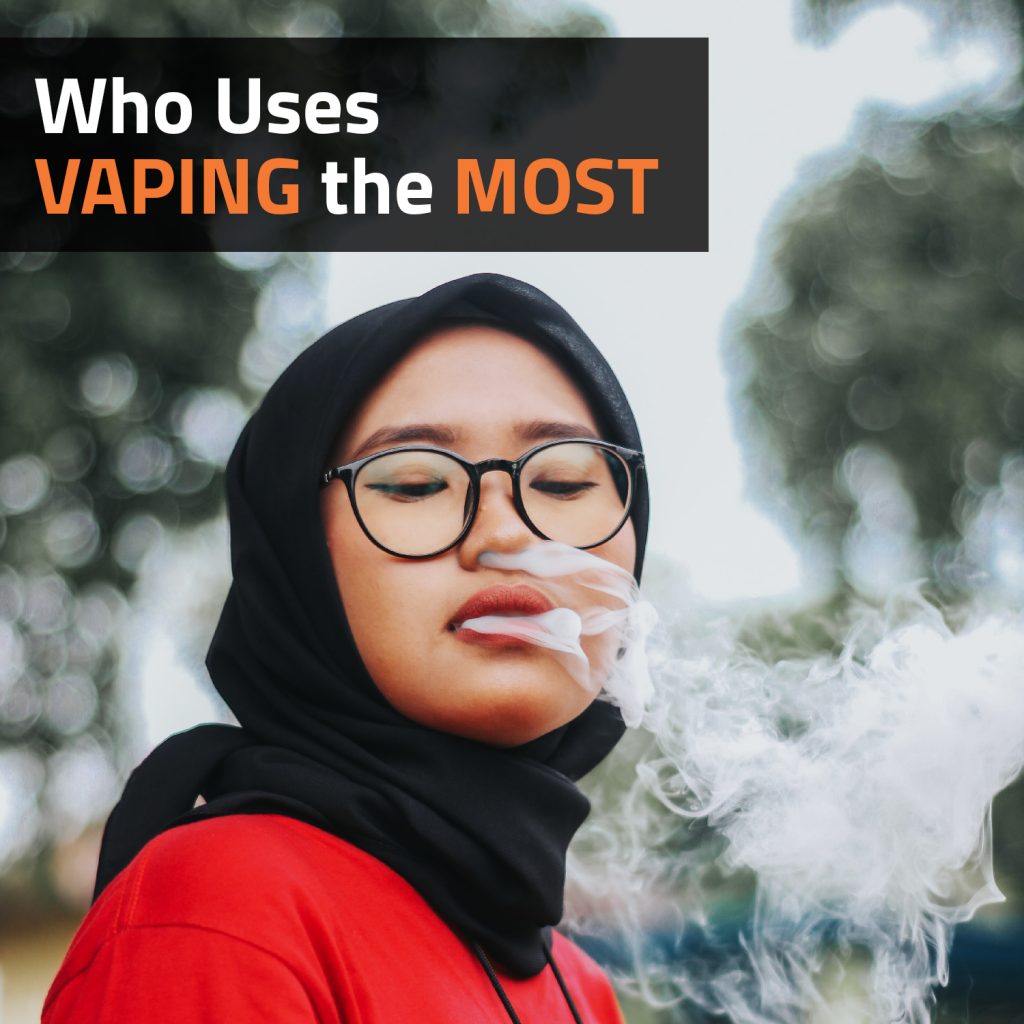Vaping has become a popular alternative to smoking in recent years. While the practice of vaping is often marketed as a way to quit smoking, it has also gained a following among those who have never smoked before. With the rise of vaping, researchers have become interested in understanding vape stats, and who is using these devices the most.
The Rise Of Vaping
The concept of vaping, or using electronic cigarettes to inhale vaporized liquid, has been around since the early 2000s. However, it wasn’t until the mid-2010s that the practice really started to gain mainstream popularity.
The rise of vaping can be attributed to a number of factors, including the growing awareness of the dangers of smoking, the rise of social media and the influence of peer-to-peer marketing, and the development of sleek and innovative e-cigarette devices that were marketed as a healthier alternative to smoking.
-
Vaporesso ECO NANO Kit
R295.00Original price was: R295.00.R185.00Current price is: R185.00. -
UWELL Caliburn X Pod System
R625.00 -
Uwell Caliburn A3 Pod Kit
R450.00Original price was: R450.00.R340.00Current price is: R340.00. -
Vaporesso GTX GO 40 Kit
R395.00
Demographics Of Vaping Users
Research has shown that vaping is a popular activity among certain demographic groups. Some of the key demographics of vapers include:
- Gender differences
- Age
- Education
- Income
- Geographical location
Gender Differences In Vaping
Gender differences in vaping are well documented, with research consistently showing that vaping is more prevalent among males than females. This gender disparity is seen across different age groups and geographic regions, indicating that it is a consistent trend. Here are some of the reasons why gender differences exist in vaping:
- Social norms: Traditional gender roles may influence attitudes towards smoking and vaping. Historically, smoking has been associated with masculinity, while femininity has been associated with being health-conscious and avoiding risky behaviours
- Marketing: E-cigarette companies have used gendered marketing strategies to target their products to males. For example, advertisements for e-cigarettes often depict young, attractive males in social settings, suggesting that vaping is a cool and social activity
- Perception of risk: Females may perceive vaping as more harmful than males. Research suggests that females are more likely to perceive the risks associated with vaping and smoking than males. This heightened risk perception may make females less likely to try e-cigarettes in the first place and more likely to quit if they do start using them
- Nicotine addiction: Males may be more likely to become addicted to nicotine, which is a key component in e-cigarettes
Age And Vaping
Age is a key demographic factor that is closely associated with vaping. Research has consistently shown that young adults are the most likely to use e-cigarettes. Here are some of the reasons why age is a factor in vaping:
- Social factors: Young adults are more likely to be exposed to social situations where vaping is normalized, such as parties, bars, and clubs. Peer pressure and social influence may also contribute to the higher rates of vaping among young adults
- Experimentation: Young adults are more likely to engage in experimentation with new products and experiences. E-cigarettes are a relatively new product, and young adults may be more willing to try them out of curiosity or to fit in with their peer group
- Addiction: Young adults are more vulnerable to developing nicotine addiction
- Accessibility: E-cigarettes are widely available and easy to access, particularly for young adults who are freshly legal to purchase them
Education And Vaping
Education is an important demographic factor that is associated with the amount of vapers. Research has consistently shown that individuals with lower levels of education are more likely to use e-cigarettes or smoke cigarettes than those with higher levels of education. Here are some reasons why education may have an impact on vaping:
- Awareness of health risks: Individuals with higher levels of education tend to have greater awareness of health risks associated with smoking and vaping. This may make them more likely to avoid e-cigarettes and other tobacco products
- Socioeconomic factors: Individuals with lower levels of education may be more likely to experience socioeconomic disadvantages, such as poverty or limited access to healthcare. These factors may contribute to higher rates of stress and anxiety, which may in turn increase the likelihood of vaping
- Accessibility: E-cigarettes are relatively easy to access and may be more affordable in the long run than traditional cigarettes. This may make them a more attractive option for individuals with lower levels of education who are more likely to be living on limited incomes. This also boosts the sale of harmful fake vaping products that are often cheaper than the real deal
Geographical Location And Vaping
Geographical location is another important demographic factor that is associated with the number of vapers in a given area. Research has shown that the amount of vapers can vary widely by region and country. Here are some of the reasons why geographical location is a factor in vaping:
- Cultural norms: Different regions and countries have different cultural attitudes towards smoking and vaping. In some places, smoking and vaping may be more socially acceptable than in others. For example, in many Asian countries, the number of smokers is higher than the number of vaper. In contrast, vaping is more popular in Western countries like the United States
- Government policies: Government policies regarding tobacco and e-cigarettes can have a significant impact on the number of vapers. For example, some countries have banned the sale of e-cigarettes or imposed strict regulations on their use. Other countries may have more lenient policies, allowing for greater access to e-cigarettes and other vaping products
- Accessibility: The availability and accessibility of e-cigarettes can vary by region. In some places, e-cigarettes may be widely available in stores and online. In other places, access to e-cigarettes may be limited or prohibited
- Marketing: E-cigarette companies often use targeted marketing strategies to appeal to specific regions and populations. Advertisements may use local celebrities or cultural references to make e-cigarettes more appealing to consumers in certain regions
Overall, these demographic patterns suggest that young adults, males, individuals with lower education and income levels, and those residing in certain regions may be more likely to vape. Vaping statistics have provided a clear significance in who vapes most.
Be sure to check out Vaperite for the best devices, e-liquids, and vaping accessories for the ultimate vaping experience with every puff.









